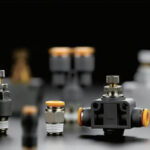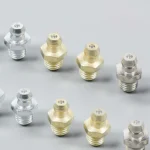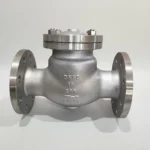In industrial pipeline systems, pressure buildup is a common and dangerous issue, especially in the oil & gas, high-pressure, and chemical industries. If the residual pressure inside a sealed chamber is not released in time, it could lead to equipment damage or personal injury. The bleeder bonnet is one of the key components designed to solve this problem.

A bleeder bonnet is a pressure-retaining device mounted on a valve assembly, used to manually release residual pressure inside the valve’s sealed chamber before maintenance or inspection. It is typically used in wellhead equipment, double block and bleed (DBB) systems, or high-pressure valves. It features high pressure resistance, corrosion resistance, and excellent safety performance.
In systems involving high-pressure operations and harsh conditions, the lack of a pressure relief function poses serious safety risks. Despite its simple structure, the bleeder bonnet plays a critical role in ensuring system safety.
What Is the Function of the Bonnet in a Valve?
In valve construction, the bonnet is an essential component attached to the upper part of the valve body. It not only provides a sealing function but also supports the stem and sealing packing.

Its main functions include:
- Pressure Retention: Prevents fluid leakage around the valve stem
- Structural Support: Provides axial stability for the valve stem’s movement
- Sealing Chamber: Provides space for packing or O-rings
Under high-pressure conditions, the bonnet must withstand internal pressure, temperature fluctuations, and chemical corrosion. Therefore, its material and structural design are key to the overall valve’s safety performance.
What Are the Common Types of Bonnets Used in Industrial Systems?
Different operating conditions require different types of bonnets. Common types include:

Standard Bonnet
The most widely used design, suitable for most low-pressure conditions.
Extended Bonnet
Mainly used in cryogenic or low-temperature systems to reduce the temperature gradient’s impact on the packing.
Bellows Seal Bonnet
Isolates the medium with a bellows, suitable for toxic, hazardous, or highly volatile media environments.
Bleeder Bonnet
Features a manual pressure relief channel, allowing pressure release from the valve chamber without opening the main valve.
Commonly used in wellhead valves, grease fittings, and DBB systems.
What Is the Difference Between a Valve Body and a Valve Bonnet?

| Comparison Item | Valve Body | Valve Bonnet |
| Location | Main structural part of the valve | Mounted on top of the valve body |
| Function | Controls media flow, connects piping | Supports stem, maintains seal, pressure resistance |
| Internal Structure | Includes seat, disc, flow channel | Contains packing, seals, grease port |
| Pressure Relief | No pressure relief function | Can be designed for pressure relief |
In valves with bleeder bonnets, the bonnet not only serves as a structural component but also provides critical safety functionality.
How Does a Bleeder Bonnet Work in High-Pressure Valves?
The basic principle of a bleeder bonnet is: after a valve is closed, any residual liquid or gas inside the chamber cannot be discharged through the main valve. If the valve is dismantled under such conditions, it poses risks of spray-out or explosion.
The main functions of the bleeder bonnet include:

- Manual Venting: Releases internal pressure through a threaded opening
- Grease Injection: Some designs feature a side port for injecting sealing grease to improve tightness
- Test Port: Allows checking if pressure remains in the valve chamber
In DBB systems, the bleeder bonnet also serves as a tool to verify true isolation of the valve. Walter Valves’ bleeder bonnets can withstand working pressures up to 10,000 psi (690 bar) and feature spring-loading, grease ports, and metal-to-metal sealing.
In Which Industries Are Bleeder Bonnets Commonly Used?
Bleeder bonnets are widely used in scenarios requiring regular maintenance, frequent opening/closing, and high-pressure media:

Oil & Gas Industry:
- Wellhead equipment
- Pressure relief on ball/gate valves
- Blowout Preventers (BOPs)
Chemical & Refining Industry:
- Venting high-pressure reactors
- End-of-line pipeline pressure release
- Tank maintenance exhaust
Energy & Machinery Industry:
- Steam venting in power plants
- Manual pressure relief in hydraulic systems
Their main advantages include simple operation, intuitive safety, and the ability to release pressure without disassembling the main components.
What Are the Common Materials and Pressure Ratings for Bleeder Bonnets?
Walter Valves’ bleeder bonnets are designed according to international standards. Typical specifications include:
Material Options:
- SS316/SS316L Stainless Steel: Excellent corrosion resistance, suitable for marine and acidic/alkaline environments
- Zinc-Plated Carbon Steel: Suitable for standard oilfield applications, cost-effective
- Alloy Steel/Inconel: Ideal for high-temperature, high-pressure environments
Specifications:
- Working Pressure: Up to 10,000 psi (customizable for higher)
- Temperature Range: -50°C to +232°C
- Connection Types: 1/4″, 1/2″, 3/4″ NPT, BSP, or custom threads
- Seal Options: O-ring or metal-to-metal seal
- Design Standards: Compliant with API, ANSI requirements
What’s the Difference Between a Bleeder Bonnet and a Bleed Valve?
This is a common question from customers. See the comparison table below:
| Comparison Item | Bleeder Bonnet | Bleed Valve |
| Installation Location | On the valve bonnet | On piping or valve seat |
| Operation Method | Pin or wrench operated | Handle-operated needle valve |
| Main Function | Manual pressure release from valve body | Regulated venting of air or liquid |
| Application | High-pressure valves, oilfield equipment | Instrumentation, lab setups |
| Replaceable? | Fixed part of the valve | Indepe |
In short, a bleeder bonnet is a safety component, while a bleed valve focuses more on fluid control functions.
What’s the Difference Between a Control Valve Bonnet and a Bleeder Bonnet?
In control valves, the bonnet is part of the regulating structure, often integrated with the actuator bracket, guide mechanism, and sealing system. It is designed for throttling and flow adjustment in automated systems.
By contrast, a bleeder bonnet does not participate in flow regulation. Its sole function is to provide a safe venting channel for sealed chambers. Despite the similar names, their applications are entirely different.
Why Choose Walter Valves’ Bleeder Bonnet Products?
Walter Valves is a manufacturer specializing in industrial valves and fittings, offering customized, high-performance products for international wholesale buyers.
Our advantages include:
- 3,000 m² in-house factory with strong machining capability
- Ample inventory with same-day shipping possible in as little as 48 hours
- Supports non-standard customization: materials, threads, structures
- Global exports: Middle East, Southeast Asia, Europe, North America, Japan, Korea
- Meets international standards: API, ANSI, ISO certified
- Factory-direct pricing, supports OEM and bulk orders
Conclusion
Bleeder bonnets play a crucial role in safely venting pressure from high-pressure valve systems. Whether in oilfields, refineries, or process control industries, Walter Valves provides reliable, professional, and customizable bleeder bonnet solutions.
For product manuals, technical drawings, or bulk quotations, please contact us via our website or email.




